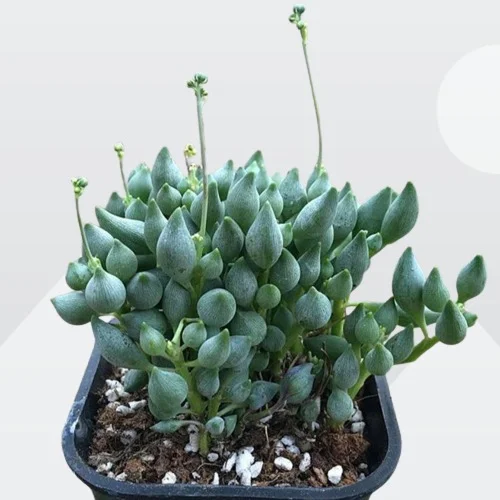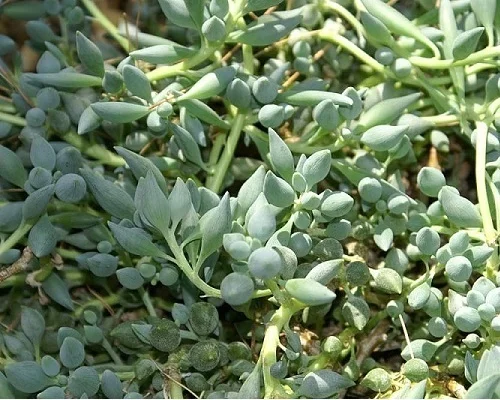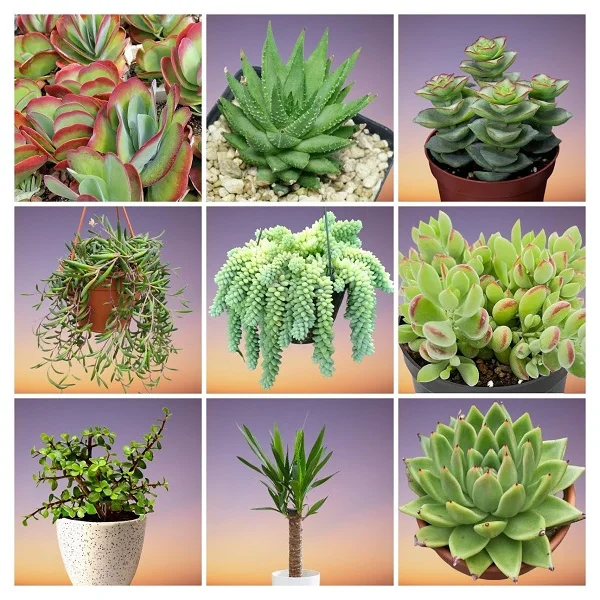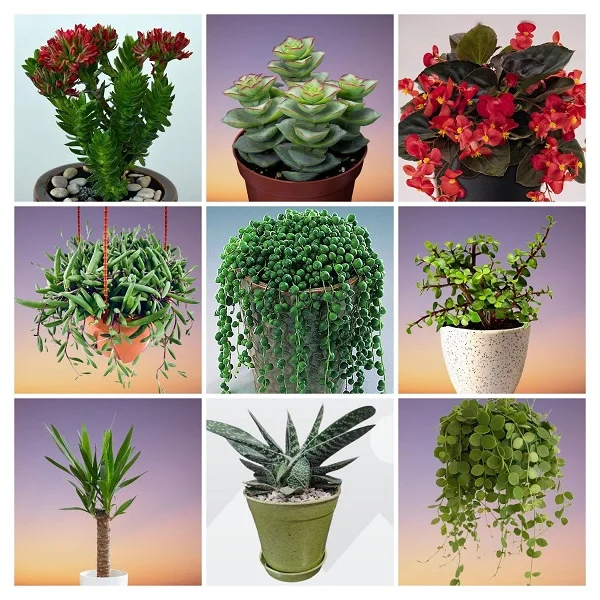String of Lemons Plant (Senecio citriformis) Indoor Care, Propagation, Problems and Solutions
Some links in this post may be affiliate links
String of Lemons Plant (Senecio citriformis) prefers bright light with some direct sunlight, moderate warmth, average humidity and moderately moist, rich, well-drained, succulents soils coupled with monthly feeding in the growing season.
Senecio citriformis also called String of Tears Plant or String of Teardrops Plant is among the popular Senecio varieties and bears erect stems on which grow oval, succulent, green to dark-green, teardrop-shaped or lemon-shaped leaves.
The leaves have translucent longitudinal stripes (windows). Each leaf bears the translucent windows that run the length of the leaf and allows light to reach into interior of the leaf where photosynthesis takes place.
The odd shaped leaves is an adaptation to arid conditions and allows for the storage of water while exposing minimum surface area to the dry desert air.
This greatly reduces water loss as the fleshy leaves and stems store water, which allows the plant to go for a considerably long period without being watered. String of Teardrops Plant is one of the best drought-tolerant plants for low water conditions.
On account of its compact size, drought tolerance and requirement for bright light with exposure to some direct sunshine, String of Teardrops Plant is among the favorite low-maintenance plants for a sunny balcony and other sunny locations.

Botanical name: Senecio citriformis
Synonmy: Curio citriformis
Family: Asteraceae
Common names: String of Lemons Plant, String of Tears Plant, String of Teardrops Plant
Origin
Senecio citriformis also called Curio citriformis is a perennial, succulent vine native to the drier parts of Southwest Africa. It is among the popular string of plants and one of the best hanging succulent plants for the home or office space.
Is String of Lemons Plant toxic?
Yes. String of Lemons Plant like other Senecio species is toxic to humans and pets as outlined by ASPCA. If ingested, it can cause drooling, vomiting, diarrhea and lethargy. Contact with the plant sap may cause skin irritation or skin rash in sensitive skin therefore, always wear gloves when handling the plant. Keep it away from the reach of children and pets to avoid mishaps.
Where to Buy
If you are looking to acquire these plants to your collection, beautiful String of Teardrops Plants are available online on Etsy (Link to Etsy).
Senecio citriformis Care Indoors
Care for String of Lemons Plant indoors, entails providing bright light with 4-6 hours of direct sunlight, moderate warmth of 20-270C, average humidity of 50-55% and moderately moist, fertile, well-drained, succulents soils coupled with monthly feeding during the growing season.
Curio citriformis care requires pruning to keep the plant neat, to minimize pest and disease infestations and rejuvenate growth. Repotting is only needed when the plant has become pot-bound. Keep reading for more on these growing conditions and how to achieve them.

Light Requirements
String of Lemons Plant grows best in bright light with at least 4-6 hours of morning or late afternoon sunlight. Protect it from hot midday sunshine to avoid scorching and loss of leaf color.
If the light is not sufficient, the plant responds with leggy growth and yellowing. Therefore, instal a full spectrum grow light where the natural lighting is not adequate.
Regularly turn the pot to ensure that the plant receives light on all sides for uniform growth and prevent leggy growth.
Watering
Water String of Lemons Plant liberally in spring and summer and allow the top 2-3 inches of soil to dry out between waterings. Maintain the soil moderately moist and avoid overwatering to prevent yellowing, rotting and leaf drop.
Lessen watering in fall and winter to maintain the soil barely moist but do not allow the soil to dry out completely to avoid wilting and leaf drop.
Use water that is at room temperature to avoid cold shock which can cause slowed growth and leaf drop.
Ensure that the pot has a drainage hole to prevent the soil from getting soggy as it may lead in root-rot and death of the plant.
Temperature and Humidity
String of Lemons Plant thrives in an average warmth of 20-270C; a room temperature that is comfortable for you is ideal for this plant. Keep it away from drafts to prevent temperature flactuations which result in stunted growth and leaf drop.
String of Teardrops Plant has no need for extra humidity. Average room humidity of 50-55% is ideal for this plant. Ensure that there is good air circulation to prevent fungal diseases infestations.
Feeding
Feed String of Lemons Plant with a balanced, liquid fertilizer monthly in spring and summer for a lush growth. The plant is not a heavy feeder so be careful when feeding.
Do not feed in fall and winter as growth is minimal at this time and feeding at this time can cause fertilizer burn and eventual death of the plant.
Potting Soil
The best soil for String of Lemons Plant should be rich in organic matter, loose and well-draining to avoid waterloggingl. The soil should be loose enough to allow water to drain out fast enough. Cactus and succulents soils are ideal as they drain easily.
Repotting
String of Lemons Plant has a small root system so frequent repotting is not necessary. Repot at the beginning of the growing season only when it becomes crowded in its current pot.
Select a pot that is only 1 size larger than the current one and one that has a drainage hole to prevent the soil from getting soggy as it can lead to root-rot. Use a shallow pot as the root system is tiny and be careful not to bury the stems to prevent rotting. Check out these succulents pots on Amazon.
Pruning
Pruning String of Lemons Plant involves removal of any dead leaves or stems to keep the plant neat and also reduce pest and disease infestations. Trim the stems if they become too long or straggly to rejuvenate growth.
Senecio citriformis Propagation
String of Lemons Plant (Senecio citriformis) is propagated at the beginning of the growing season from stem cuttings.
Propagating String of Lemons Plant from stem cuttings
- Take 3-5 inches stem cuttings from a healthy plant.
- Allow the cuttings to dry (callus) for about 7 days.
- Lay the stem cuttings on moist, well-draining soil and lightly press the stems into the soil at the nodes.
- Place the set up in a warm, well-lit place away from direct sunlight to avoid scorching.
- Maintain the soil moist until the stems are well rooted.
- Allow substancial growth before transplanting the new plants after which you can begin routine care.

Senecio citriformis Problems & Remedies
String of Lemons Plant (Senecio citriformis) problems are leaf drop, leggy growth, leaf spots, wilting, pests and diseases among others. Keep reading for more on these problems and how to solve them.
Leaf drop
Leaf drop on String of Lemons Plant is caused by cold water, inconsistent watering, soggy soil, and temperature stress.
How to fix it
Cold water: Water the plant with water that is at room temperature to avoid shocking this tropical plant.
Inconsistent watering: Water when the top 2-3 inches of soil feel dry but never allow the soil ball to dry out completely.
Soggy soil: Use a pot with a drainage hole and well-draining soil.
Temperature stress: Keep the plant away from drafts emanating from AC units, hot air vents, stoves, windy doors, drafty windows and others.
Leggy growth
Leggy growth or elongated stems on String of Lemons plant in fall and winter is due to overwatering or soggy soil. Water the plant less during the cold season to maintain the soil barely moist and ensure that the pot has a drainage hole to prevent the soil from getting soggy.
If leggy growth in happens in spring and summer, then the cause is too little light. Move the plant to a brighter spot where it will receive bright light with at least 4-6 hours of direct sunshine or instal a grow light if the natural lighting is not adequate.
In addition, turn the pot regularly to ensure that the plant receives light on all sides for a balanced growth.
Brown dry spots
Brown dry spots on String of Lemons Plant are due to underwatering. Water the plant when the top 2-3 inches of soil dry. Do not allow the soil to dry out completely.
Wilted, discolored leaves
Wilted and discolored leaves on String of Lemons Plant are caused by overwatering in fall and winter. Significantly decrease watering in the cold season to keep the soil barely moist as growth is reduced at this time.
Pests
Common pests on String of Lemons Plant are spider mites, scales and mealybugs.
How to fix it
- Isolate the affected plant to prevent spread to other plants.
- Treat the infested plant with neem oil or insecticidal soap as per the manufacturers' recommendations.
- Check between the leaves for these pests and carry out timely control measures.
- Keep the plant well groomed to discourage the pest infestations.
Diseases
String of Lemons Plant is prone to the following three diseases:
1. Leaf spot disease which presents as brown, soft leaf spots.
How to fix it
- Isolate the affected plant to minimize spread.
- Treat infected plant with systemic fungicide as per the manufacturers' recommendations.
- Avoid wetting the leaves during watering to minimize the disease infestation; you may water from the bottom.
- Maintan a good air flow for the plant to discourage the disease.
2. Powdery mildew is a fungal disease characterized by spotting or coating of the leaf surface with a white powdery deposit.
How to fix it
- Remove the badly affected leaves and discard or burn to reduce spread to other parts of the plant.
- Spray the plant with a systemic fungicide. Ensure to follow the instructions on the label.
- Improve the air circulation for your plant to reduce the occurrence of the disease.
3. Basal stem-rot disease which is prevalent in overwet conditions. It is characterized by rotting plant base and stems collapse.
How to fix it
- Use the upper healthy stems to propagate new plants and discard the infected parts to reduce spread to the rest of the plant.
- Reduce watering; water only when the top 2-3 inches of the soil dry out.
You liked it? Share on social media.
Related Content
Amazon Associates Disclosure
Homeplantsguide.com is a participant in the Amazon Services LLC Associates Program, an affiliate advertising program designed to provide a means for sites to earn advertising fees by advertising and linking to amazon.com.





